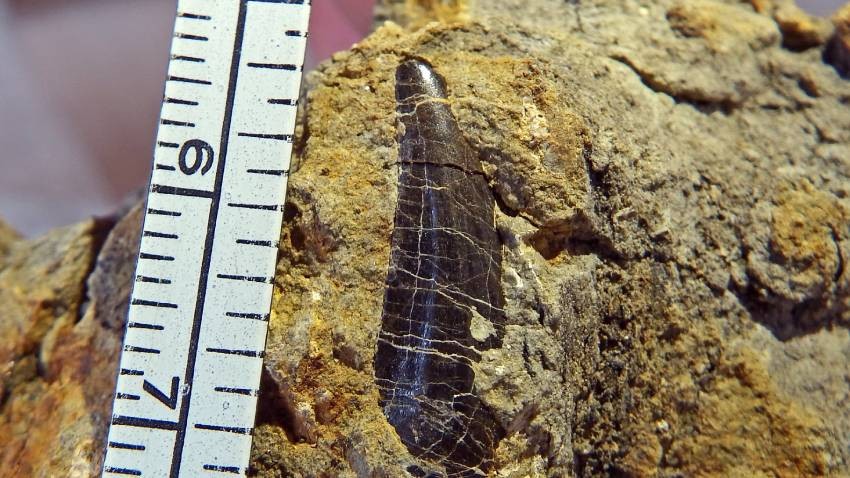What was the animal world like in the region of what is today the town of Trun more than 80 million years ago – that is the question paleontologists from the Bulgarian Academy of Sciences’ National Museum of Natural History have been trying to answer. More than 30 fossils of vertebrates have been collected as a result of their summer expedition taking place near Trun for the 7th year running. They have been dated to the late Cretaceous period.
The fossils found include bones from large reptiles, crocodile teeth, a lot of fragments, among them tortoise shells, teeth from fish no longer to be found in Europe, frog bones as well as hitherto unknown fossils which the scientists say will most probably turn out to be insect fossils from the age of dinosaurs. What all this shows, the paleontologist say, is that there once existed an exceedingly rich ecosystem in the region of Trun which will, from a scientific point of view, help fill in the blanks about life in these parts 80 million years ago.
Compiled by Gergana Mancheva
Translated and posted by Milena Daynova
Photos:National Museum of Natural History of the Bulgarian Academy of Sciences
In today’s world, where material values overshadow the spiritual, reflections on the salvation of souls somehow remain in the background. The constant race against time and the stream of daily tasks muffle the voice of the soul, which struggles to..
In 1018, after half a century of struggle, the First Bulgarian Empire was conquered by Byzantium. Despite the many uprisings of the Bulgarians, the power of Constantinople lasted for nearly two centuries. In the autumn of 1185 or the..
On 19 October, Bulgarians commemorate St Ivan Rilski, also known as St John of Rila, who is considered the country’s heavenly protector. He founded the Rila Monastery, which is the largest and most influential spiritual centre in Bulgaria. Ivan..

+359 2 9336 661
